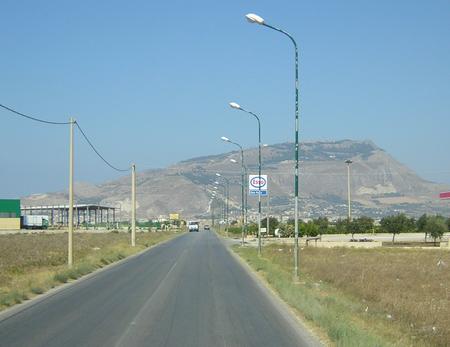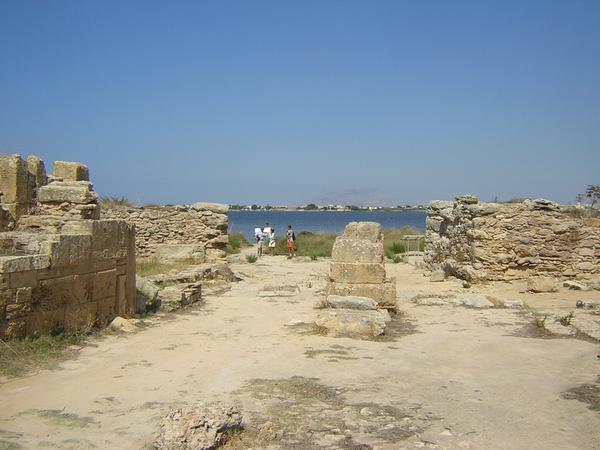Eryx
Q3861524Eryx: mountain on western Sicily, modern Erice.

The isolated Mount Eryx is about 750 meters high and dominates the western part of Sicily. Weather conditions permitting, you can see Africa from it summit.
In Antiquity, there was a Phoenician sanctuary to the goddess Tanit, who was later identified with Aphrodite and Venus. There was also a shrine to Melqart (identified with Heracles). In 510, the Spartan prince Dorieus attempted to build a Greek city on Eryx, but he failed. It remained a stronghold of the Carthaginian until they lost Sicily to the Romans after the First Punic War. Eryx was among the last Carthaginian garrisons, commanded by Hamilcar Barca.
The second picture was taken from Motya, a Phoenician city built on an island in the lagoon west of Eryx. The photo shows a city gate, which is built in the direction of the mountain, even though it gives access to the sea.

In the Roman age, the temples belonged to the nearby city of Segesta. The Venus temple was considered to have been dedicated by the legendary hero Aeneas to his mother. The Romans built their first temple for Venus Erycina in 217, after the battle of the Trasimene lake, in order to gain support from the Carthaginian deity.note A second one was built in 184.note One of these was restored by the emperor Tiberius.note
Polybius of Megalopolis describes Eryx as follows:
Eryx is a mountain on the sea on that side of Sicily which looks towards Africa. It is situated between Drepana and Panormus, or rather it is adjacent to Drepana, on the borders, and is much the biggest mountain in Sicily after Etna. On its summit, which is flat, stands the temple of Venus Erycina, which is indisputably the first in wealth and general magnificence of all the Sicilian holy places. The city extends along the hill under the actual summit, the ascent to it being very long and steep on all sides.note